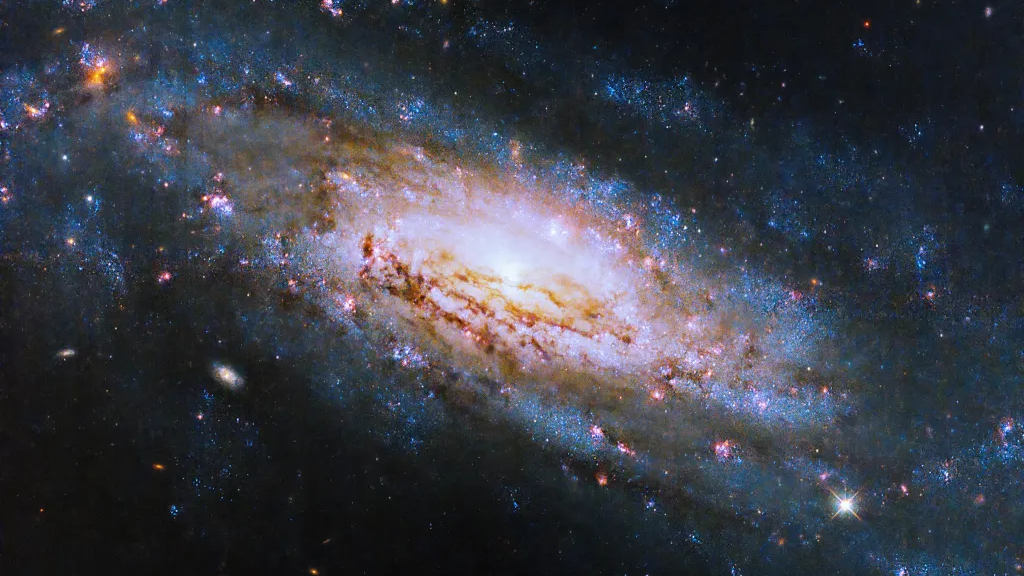
Step aside, Shark Week. NASA's Black Hole Week is our favorite celebration of really cool (and sometimes terrifying) things. This year, it's starting us on quite a beautiful note with a new Hubble Space Telescope image of the dazzling spiral galaxy NGC 4951, located 50 million light-years away in the constellation Virgo. Peaceful? At first glance, perhaps. But remember, this is Black Hole Week — so, of course, this picturesque galaxy has what NASA describes as a "voracious black hole" at its core.
NGC 4951 has an active galactic nucleus (AGN), which means it's radiating extreme amounts of energy. And, if you guessed that it's the black hole creating that eruption of energy, you'd be correct. However, NGC 4951 is also a Seyfert galaxy. Whereas most AGNs are so bright, the light they emit drowns out the galaxies themselves. Seyfert galaxies, on the other hand, remain visible to us — and that's what makes NGC 4951 such a photogenic subject for Hubble.
It's particularly meaningful that NASA chose a Hubble image to kickstart Black Hole Week. After it launched in 1990, the space telescope helped to prove the existence of supermassive black holes at the centers of galaxies. And not just a few galaxies — pretty much all of them. It did so via imaging the effects these voids have on galaxies surrounding them. For instance, it captured disks of gas revolving around the black holes and jets of material emanating from their cores. The first-ever direct image of a black hole itself wasn't taken until 2019, to be clear, via the Event Horizon Telescope collaboration. Hubble just had some great hints.
Black holes are certainly one of the more awe-inspiring (and, again, frightening) astronomical objects, given that absolutely nothing can escape their intense gravitational pull — not even light. Plus, we know fairly little about these monsters lurking in the dark, and I have to admit, the unknown is rather unnerving. Fortunately, researchers love the unknown, which is why instruments like Hubble continue to gather black hole information. Maybe one day we'll figure these enigmas out once and for all!







